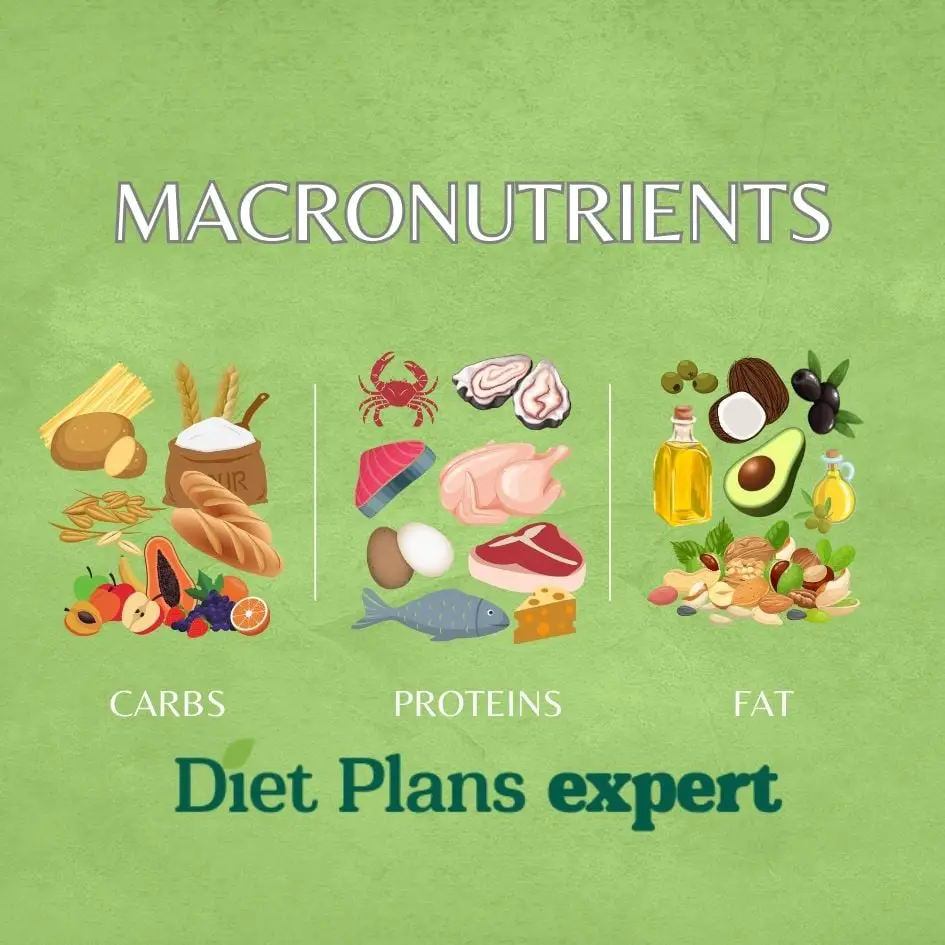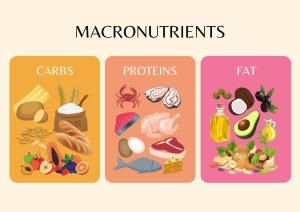
Macronutrients are the nutrients that your body needs in large amounts. They provide your body with energy, help build and repair tissues, and regulate many important bodily functions. There are three main macronutrients: carbohydrates, protein, and fat.
Why are macronutrients important?
Macronutrients are essential for your health. They provide your body with the energy it needs to function properly. They also help build and repair tissues, regulate your metabolism, and protect your organs.
How do macronutrients work?
Carbohydrates are your body’s main source of energy. They are broken down into glucose, which is the body’s preferred fuel source. Protein is used to build and repair tissues, as well as to produce enzymes and hormones. Fat is used for energy storage, insulation, and protection of organs.

Macronutrients
In this blog post, we will discuss the role of macronutrients in your diet. We will cover the different types of carbohydrates, protein, and fat, as well as the benefits and risks of eating too much or too little of each macronutrient. We will also discuss how to balance your macronutrients to achieve your health goals.

Pasta as a source of carbohydrates. Photo by Emiliano Vittoriosi on Unsplash
Carbohydrates are your body’s main source of energy. They are found in many foods, including bread, pasta, rice, fruits, vegetables, and milk.
What are carbohydrates?
Carbohydrates are made up of carbon, hydrogen, and oxygen atoms. They are classified into three main types:
How do carbohydrates provide energy?
When you eat carbohydrates, they are broken down into glucose. Glucose is then absorbed into the bloodstream and transported to cells throughout the body. Cells use glucose for energy, or they store it for later use.
What are the benefits of eating carbohydrates?
Carbohydrates provide your body with energy. They also help to regulate blood sugar levels and prevent hunger. Additionally, carbohydrates are important for brain function.
What are the risks of eating too many carbohydrates?
Eating too many carbohydrates can lead to weight gain. It can also increase your risk of developing type 2 diabetes. Additionally, eating too many simple carbohydrates can lead to spikes in blood sugar levels, which can be harmful to your health.
How to choose healthy carbohydrates
When choosing carbohydrates, it is important to choose healthy options that are high in fiber and low in sugar. Some healthy carbohydrate choices include:
Conclusion
Carbohydrates are an important part of a healthy diet. However, it is important to choose healthy carbohydrate choices that are high in fiber and low in sugar. By making wise choices, you can enjoy the benefits of carbohydrates without the risks.

Steak as a source of protein. Photo by Food Photographer on Unsplash
Protein is a macronutrient that is essential for your health. It is used to build and repair tissues, as well as to produce enzymes and hormones. Protein is also important for maintaining a healthy weight and for preventing muscle loss.
What is protein?
Protein is made up of amino acids, which are the building blocks of proteins. There are 20 different amino acids, and your body needs all of them to function properly. Amino acids can be obtained from food or can be produced by your body.
Types of protein
There are two types of protein:
How does protein provide energy?
Protein can be used for energy, but it is not as efficient as carbohydrates or fat. When you eat protein, it is broken down into amino acids. These amino acids can then be used to build and repair tissues, or they can be used for energy.
Benefits of eating protein
There are many benefits to eating protein, including:
Risks of eating too much protein
There are few risks associated with eating too much protein. However, some people who eat very high-protein diets may experience side effects such as constipation, kidney stones, and dehydration.
How to choose healthy protein sources
When choosing protein sources, it is important to choose healthy options that are low in saturated fat and sodium. Some healthy protein sources include:
Conclusion
Protein is an important part of a healthy diet. It is important to choose healthy protein sources that are low in saturated fat and sodium. By making wise choices, you can enjoy the benefits of protein without the risks.

Avocado as a source of healthy fat. Photo by Gil Ndjouwou on Unsplash
Fat is a macronutrient that is essential for your health. It is used to store energy, insulate your body, protect your organs, and absorb vitamins.
What is fat?
Fat is made up of fatty acids, which are chains of carbon atoms with hydrogen atoms attached. There are two main types of fatty acids: saturated and unsaturated. Saturated fatty acids are solid at room temperature, while unsaturated fatty acids are liquid at room temperature.
Types of fat
There are three main types of fat:
How does fat provide energy?
Fat is a more efficient source of energy than carbohydrates or protein. When you eat fat, it is broken down into fatty acids. These fatty acids can then be used for energy, or they can be stored for later use.
Benefits of eating fat
There are many benefits to eating fat, including:
Risks of eating too much fat
Eating too much saturated or trans fat can raise your cholesterol levels. This can increase your risk of heart disease and stroke.
How to choose healthy fat sources
When choosing fat sources, it is important to choose healthy options that are low in saturated and trans fat. Some healthy fat sources include:
Conclusion
Fat is an important part of a healthy diet. It is important to choose healthy fat sources that are low in saturated and trans fat. By making wise choices, you can enjoy the benefits of fat without the risks.
Additional information
The ideal balance of macronutrients for your individual needs will vary depending on your age, sex, activity level, and health goals. However, there are some general guidelines that can help you to achieve a healthy balance of macronutrients.
Carbohydrates
The recommended daily intake of carbohydrates for adults is 45-65% of total calories. However, if you are trying to lose weight, you may want to reduce your carbohydrate intake to 40-50% of total calories.
Protein
The recommended daily intake of protein for adults is 10-35% of total calories. However, if you are active or trying to build muscle, you may need to increase your protein intake to 30-40% of total calories.
Fat
The recommended daily intake of fat for adults is 20-35% of total calories. However, if you have high cholesterol or heart disease, you may want to reduce your fat intake to 20-25% of total calories.
How to balance your macronutrients
There are a few different ways to balance your macronutrients. One way is to track your calorie intake and macronutrient intake using a food tracking app. This can help you to see how much of each macronutrient you are eating and make adjustments as needed.
Another way to balance your macronutrients is to focus on eating whole, unprocessed foods. Whole foods are generally lower in calories and saturated fat, and they are higher in fiber and nutrients. This can help you to feel fuller longer and avoid overeating.
Finally, you can also balance your macronutrients by following a specific diet plan. There are many different diet plans available, so you can find one that fits your individual needs and preferences.
Conclusion
Balancing your macronutrients is an important part of a healthy diet. By following the guidelines in this section, you can ensure that you are getting the nutrients you need to stay healthy and reach your fitness goals.
Additional information
Macronutrients play an important role in your overall health. They provide your body with energy, help build and repair tissues, and regulate many important bodily functions.
Carbohydrates and health
Carbohydrates are your body’s main source of energy. They are also important for brain function and gut health. Eating a balanced diet that includes plenty of complex carbohydrates can help you maintain a healthy weight, reduce your risk of type 2 diabetes, and improve your overall health.
Protein and health
Protein is essential for building and repairing tissues. It is also important for maintaining a healthy immune system and for producing enzymes and hormones. Eating enough protein can help you maintain a healthy weight, build muscle, and improve your overall health.
Fat and health
Fat is essential for storing energy, insulating your body, protecting your organs, and absorbing vitamins. However, not all fats are created equal. Some fats, such as saturated and trans fats, can increase your risk of heart disease and stroke. Other fats, such as unsaturated fats, can actually help to lower your risk of heart disease.
How macronutrients affect your health
The amount and type of macronutrients you eat can have a significant impact on your health. For example, eating a diet that is high in saturated and trans fats can increase your risk of heart disease and stroke. On the other hand, eating a diet that is high in fiber and unsaturated fats can help to lower your risk of these diseases.
How to choose healthy macronutrients
When choosing macronutrients, it is important to choose healthy options that are low in saturated and trans fat. Some healthy macronutrient choices include:
Conclusion
Macronutrients play an important role in your overall health. By choosing healthy macronutrients and balancing your intake, you can improve your health and reduce your risk of chronic diseases.
Additional information
In this blog post, we have discussed the role of macronutrients in your diet. We have covered the different types of carbohydrates, protein, and fat, as well as the benefits and risks of eating too much or too little of each macronutrient. We have also discussed how to balance your macronutrients to achieve your health goals.
I hope you have found this information helpful. If you have any questions, please feel free to leave a comment below.
Here are some tips for balancing your macronutrients:
Here are some resources for further information:
